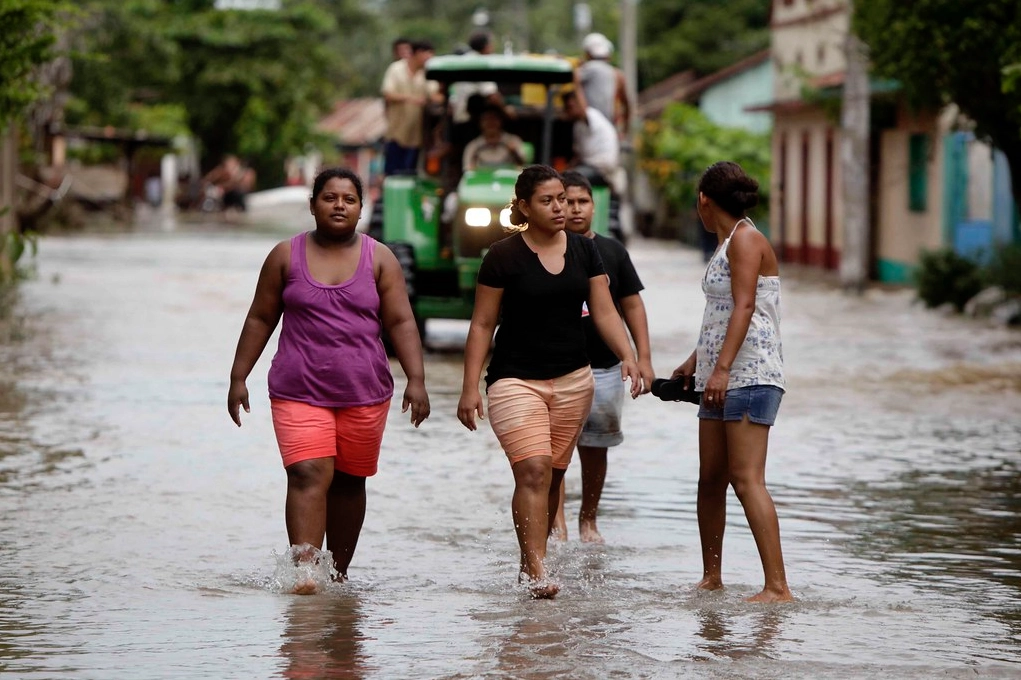Migrations caused by floods, forest fires and droughts in countries such as Brazil, Argentina and Chile, or the need to relocate coastal populations due to rising sea levels, as is happening on the Atlantic and Pacific coasts of Panama, are some of the examples of human mobility in the context of climate change in Latin America.
In the region, as in the rest of the world, climate change is worsening and causing significant damage in all spheres, as warned by the Intergovernmental Panel on Climate Change (IPCC). Increased levels of hunger and food insecurity, the rise of various diseases, and the global loss of biodiversity are forcing millions of people to leave their homes every year.
Climate change has unequal effects and affects the countries of the global South more intensely, which are more exposed and vulnerable to its impacts. Moreover, the capability of these countries to face and recover from the adverse effects of climate change is limited. This is due to factors such as poverty and inequality, the increased presence of conflicts, the scarcity of economic and human resources, and institutional fragility.
Latin America accounts for only 8% of global greenhouse gas emissions but is highly vulnerable to climate change. In the region, this phenomenon has an impact on migration and particularly on internal displacement. According to the Internal Displacement Monitoring Center (IDMC), 2.1 million internal displacements due to disasters were recorded in the Americas in 2022 alone.
According to the United Nations Office for Disaster Risk Reduction, Latin America and the Caribbean is the second most disaster-prone region in the world, after Asia and the Pacific. In the period from 2000 to 2022, well over 190 million people have been affected by disasters such as floods, storms, earthquakes, landslides, and droughts. This is a historical phenomenon, the effects of which are aggravated by risk factors such as poverty, inequalities, hunger, food insecurity, economic crises, and political instability. But these factors have recently been compounded by increasing environmental degradation and climate change, as well as the high number of people living in informal settlements in the metropolises of the developing world.
According to World Bank projections, by 2050 climate change could lead to 216 million climate-induced internal migrants in six regions: sub-Saharan Africa; East Asia and the Pacific; South Asia; North Africa; Latin America; and Eastern Europe and Central Asia. The most pessimistic climate scenarios estimate that 17 million people could be displaced by the effects of climate change in Latin America by 2050.
Current climate migration figures and projections for the coming decades led the director of the International Organization for Migration (IOM), Amy Pope, to state in September 2023 that “we have officially entered the era of climate migration”. The IOM defines this phenomenon as the “displacement of a person or groups of persons who, predominantly for reasons of sudden or progressive environmental change due to climate change, are forced to leave their place of habitual residence, or choose to do so, temporarily or permanently, within a state or across an international border.” Climate migration is, therefore, a subcategory of environmental migration. However, it is necessary to overcome reductionist and alarmist views to understand its real characteristics and effects.
As migration studies show, human mobility is a complex process driven by various causes that climate change can reinforce, accelerate, or aggravate. In this sense, the necessary focus on climate change as an indirect factor, often directly associated with internal and international migration, cannot and should not obscure the economic, political, and social forces behind human mobility.
After all, factors such as poverty, inequalities, food and resource scarcity, urbanization, and lack of employment continue to be major drivers of population displacement, and it is no coincidence that the populations of the global South are the main ones displaced by this phenomenon. However, in a world where human mobility is a desired strategy, but not available to all, forced immobility and the existence of populations trapped in their places of origin constitute a silent majority.
The necessary scientific perspective on migration, the recognition that there are strategies for adapting to climate change and that its effects can often be prevented and mitigated with appropriate policies, should not prevent us from discussing a topic that deserves full attention. The relationship between the environment, climate change, and migration is present in the 2030 Agenda, in the Global Compacts on Migration and Refuge, and in specific instruments such as the Nansen Initiative, the Sendai Framework for Actio, and the Peninsula Principles on Climate Displacement Within States, to name a few. At the global level, there is also an important movement to broaden the definition of refuge to recognize the environmental and climatic causes that motivate this process.
In Latin America, groups such as RESAMA (South American Network for Environmental Migration) have been working for more than a decade to make this reality visible and have led to the formulation of scientific evidence and public policy recommendations. There are also initiatives such as humanitarian visas for people displaced by disasters in Brazil and Argentina, while in Colombia a recent bill (N. 299/2022C) seeks to recognize, in a pioneering way, displacement due to climate change. There is also a significant regional effort for a new reading of the 1984 Cartagena Declaration on Refugees that includes the environmental causes of this phenomenon.
However, when discussing climate migration, we must not forget the responsibility of the states in the face of climate change or the unequal effects that this phenomenon causes at the global level, with emphasis on the countries of the South. In other words, it is not possible to carry out global climate negotiations or seriously discuss its impacts on human mobility without recognizing the links between this phenomenon and the lack of social and environmental justice. In a region such as the case of Latin America, characterized by huge inequalities and increasing levels of multidimensional injustice, this should be the starting point.
*Translated by Janaína Ruviaro da Silva from the original in Spanish.












